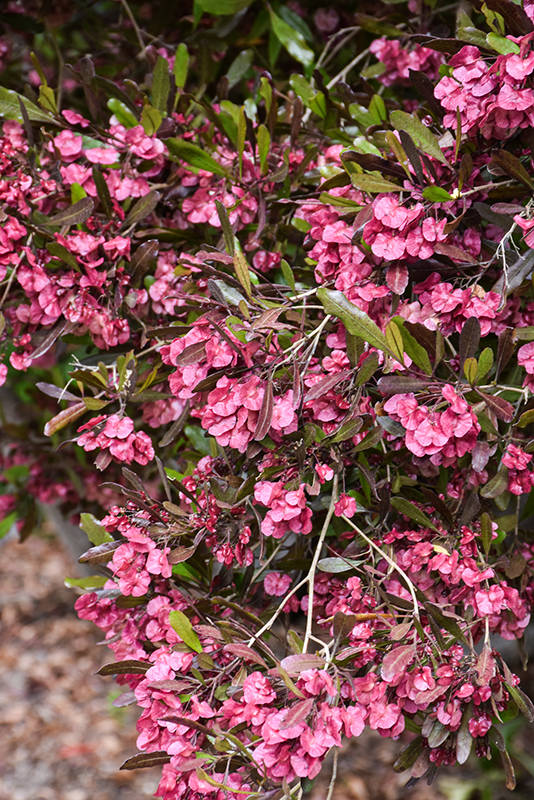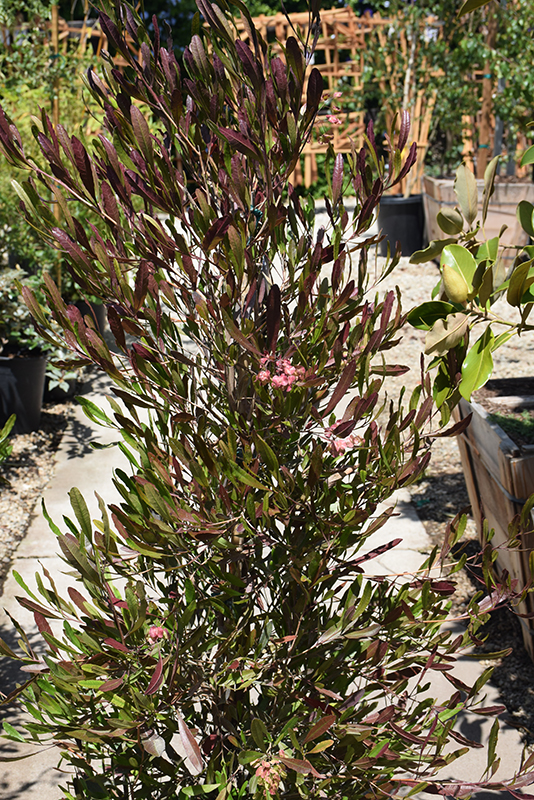Height: 15 feet Spread: 10 feet
Sunlight:
Hardiness Zone: 8b Other Names: Hopbush, Hopseed Bush, Hopwood, Candlewood Brand: Monrovia Description: A rapidly growing shrub that is great as a hedge or informal screen; flowers are insignificant, but are followed by pinkish fruit; bronze-green foliage turns deep purple-red in fall; tolerant of dry summer conditions once established Ornamental Features Purple Hop Bush has coppery-bronze-variegated rich green foliage on a plant with an upright spreading habit of growth. The narrow leaves turn outstanding shades of burgundy and dark red in the fall, which persists throughout the winter. It produces small clusters of brown hop-like fruit from late summer to early fall. Landscape Attributes Purple Hop Bush is a multi-stemmed evergreen shrub with an upright spreading habit of growth. Its relatively fine texture sets it apart from other landscape plants with less refined foliage. This is a relatively low maintenance shrub, and can be pruned at anytime. It has no significant negative characteristics. Purple Hop Bush is recommended for the following landscape applications; Planting & Growing Purple Hop Bush will grow to be about 15 feet tall at maturity, with a spread of 10 feet. It has a low canopy with a typical clearance of 1 foot from the ground, and is suitable for planting under power lines. It grows at a fast rate, and under ideal conditions can be expected to live for approximately 20 years. This shrub does best in full sun to partial shade. It prefers dry to average moisture levels with very well-drained soil, and will often die in standing water. It is not particular as to soil type or pH, and is able to handle environmental salt. It is highly tolerant of urban pollution and will even thrive in inner city environments. This is a selection of a native North American species. Purple Hop Bush makes a fine choice for the outdoor landscape, but it is also well-suited for use in outdoor pots and containers. Its large size and upright habit of growth lend it for use as a solitary accent, or in a composition surrounded by smaller plants around the base and those that spill over the edges. It is even sizeable enough that it can be grown alone in a suitable container. Note that when grown in a container, it may not perform exactly as indicated on the tag - this is to be expected. Also note that when growing plants in outdoor containers and baskets, they may require more frequent waterings than they would in the yard or garden.![]()
![]()
![]()
![]()
![]()
![]()
![]()
![]()
![]()
![]()
![]()
top of page
Louie's Nursery Menifee - Plant Finder
Characteristics
Applications
Features & Attributes
This tool is an online resource representing many of the varieties that we carry over the course of the season, and is intended for informational purposes only. Inventory varies seasonally, so we cannot guarantee that every plant will be in stock at all times - please contact the store directly for current availability. It does not include our entire selection of plants, so be sure to visit our store to see varieties that may not be represented on this list.
bottom of page

